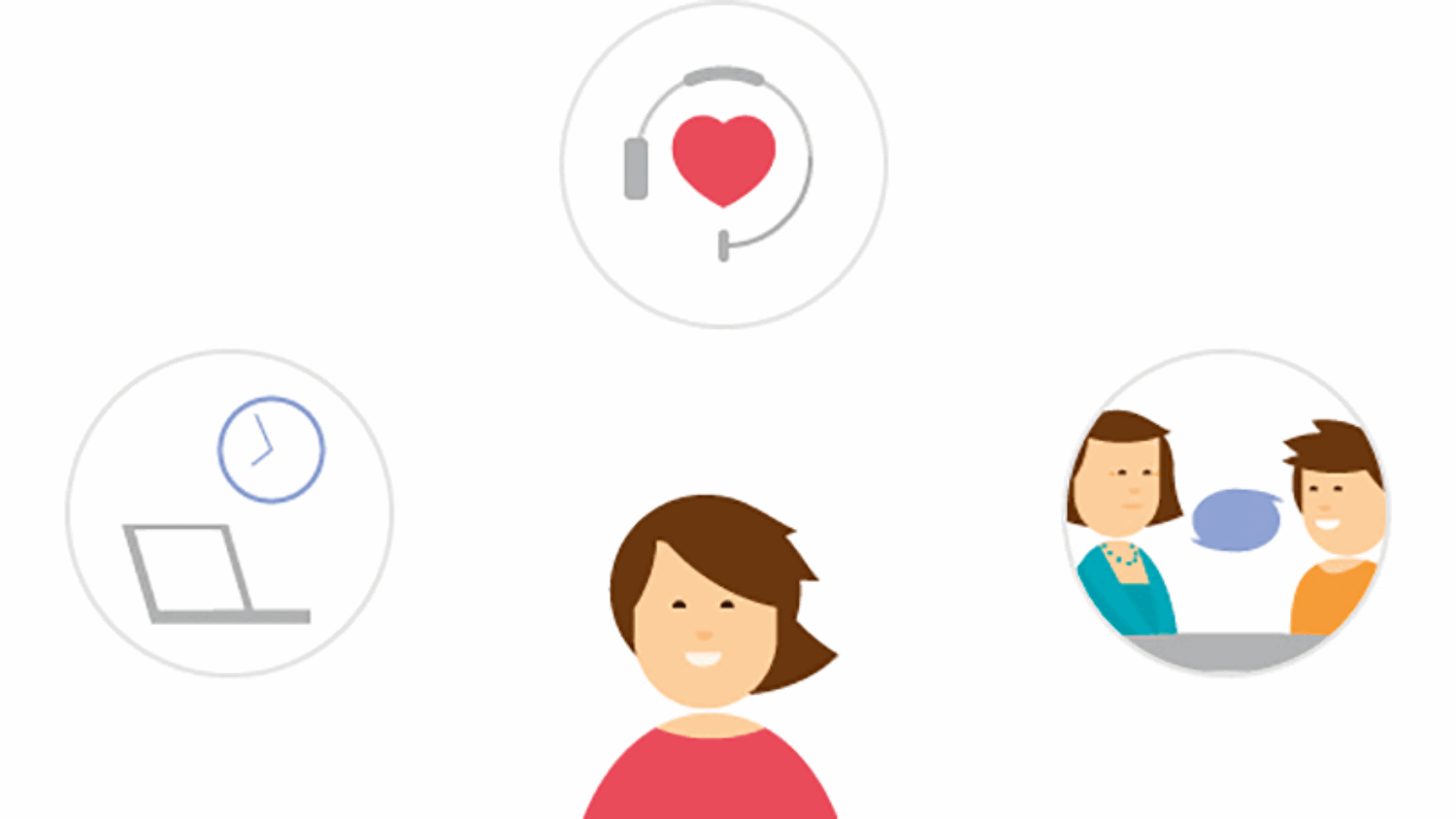Tele-audiology has been on our radar for a long while, and evidence shows that its application in clinical practice is beneficial to both patients and clinicians. Cherilee Rutherford discusses the benefits and gives an overview of the freely-available tools developed by the Ida Institute.
Tele-audiology is a term that is used today to describe hearing care services that are delivered remotely, and it provides alternative ways for clinicians to connect with individuals and families who are living with hearing loss. Historically, telehealth has developed out of a need to overcome the problem of distance or lack of healthcare providers in an underserved area and, in 1878, the telephone was already being used to reduce physician follow-up visits. Today, telehealth is used to:
- Enable patients to remain in the comfort of their home.
- Reduce travel time.
- Allow for remote and rural access.
- To consult non-local professionals.
- Provide access to specialists.
Activating patient and family engagement remotely
There is a growing body of evidence in general healthcare that shows (1) improved outcomes for patients and (2) lower healthcare costs, when patients are activated and engaged in their care. The concept of ‘patient activation’ describes aspects of self-management: for example, a patient’s knowledge, skills, ability, and willingness to manage their care. ‘Patient engagement’ refers more broadly to a process that combines patient activation with an effort to promote positive behaviour in order to achieve improved outcomes, better care and lower costs [1]. This is becoming increasingly important in the management of chronic conditions like hearing loss.

“Options like these enable patients to obtain good quality information before seeing a clinician for the first time.”
When people with hearing loss and their families are actively involved in their care, it allows the clinician to have a fuller understanding of their needs and preferences and engage in shared decision-making regarding ongoing hearing care. In short, it enables the clinician to be a better facilitator of person-centred hearing care.
So, what can we do as professionals to help enable patient engagement and support patients and families in becoming active participants in their hearing and communication? Is there an opportunity to help patients and families prepare for their audiology appointments, so that they can think about their needs and priorities before seeing their audiologist? The Ida Institute, in collaboration with clinicians from around the world, has developed a set of tools that sets out to do exactly that. Patients and families can access a set of resources online, sent to them by their hearing care provider, to help prepare for their first or follow-up appointments. Examples of these include Why Improve My Hearing, My Turn To Talk, Living Well Online and the Tinnitus Thermometer.
Options like these enable patients to obtain good quality information before seeing a clinician for the first time, help them to think about questions they may want to ask, and manage expectations for the clinical encounter. These options are also beneficial for the health professional who is able to obtain information about the patient’s hopes and expectations and include the views of the communication partners. By sending out these links ahead of time, the clinician may then be able to spend more time with the patient discussing different treatment options as well as strategies for how to manage hearing loss adapted to the patient’s individual needs and preferences, and less time collecting information during the face-to-face appointment.
Building the patient-clinician relationship via telehealth
Some fear that services delivered through telehealth might not be perceived to be as good as services delivered in person, and that the professional relationship might suffer as a result of remote care [2]. Orsini provides three simple techniques to help clinicians build trusting relationships while delivering telehealth services [3]:
- Give the patient your undivided attention and be aware of your body language and eye contact. Try to take limited notes while conversing and be mindful of your facial expressions while communicating online.
- Frame the consultation as a conversation rather than an interview and be extra careful not to interrupt the patient or make them feel rushed.
- Today’s patient wants to interact with their healthcare professional on a personal level. Avoid the ‘all business’ attitude. Ask the patient where they are from and find a common interest if possible to help form that relationship. In addition to these techniques, the Ida Telecare tools provide further opportunities to build and enhance relationships with patients before they attend their first appointment, or in between appointments.
In a recent study by David Maidment and colleagues about the Why Improve My Hearing tool, patients have reported that using the tool helps them to start building a relationship with their clinician even before seeing them for the first time. The tool communicates the message that the clinician is interested in understanding their unique needs and preferences and sets the tone for future personalised interactions.
“Patients have reported that using the tool helps them to start building a relationship with their clinician even before seeing them for the first time.”
Involving family and friends in the management process
Hearing loss affects more than the person with the diagnosis – it involves the family, friends and other communication partners. Hearing loss can also be considered a communication loss and the WHO acknowledges the notion of third party disability. Involving family and friends in the management of hearing loss is therefore a fundamental part of person-centred hearing care. Although this is a well-known concept, we know from research that typical audiology appointments don’t involve family and friends in an effective, personalised way. The Ida Institute’s suite of Telecare tools can also be used and adapted to actively involve the perspectives of the communication partners, close family members and friends. If encouraged and framed correctly by the clinician, the tools can be used to actively engage family members to also contribute their views, needs, and perspectives ahead of the audiology appointment. The tools enable the person with hearing loss and their families to engage in active, reflective conversation about how hearing loss might affect their lives and they often find these conversations to be immensely valuable.
Ida Telecare tools to enhance the diagnostic and rehabilitative journey
Ida Telecare is a suite of free online tools that can be used to support the three main phases in a client’s journey to hearing health:
- Preparation for first appointment.
- Preparation for follow-up appointments.
- Everyday life with hearing loss.
Why Improve My Hearing asks the person with hearing loss to choose a situation and then rate their desire to improve their hearing for that situation. The tool helps people with hearing loss assess their readiness to take action before they meet with a hearing care professional.
My Turn to Talk for Adults identifies the immediate communication partners of the person with hearing loss. The tool helps clients think about who they communicate the most with, what they would like help with, what they are concerned about, and what their communication goals are before coming to the appointment.
My Turn to Talk for Parents gives parents of children with hearing loss a voice in their child’s appointment to ensure their questions and concerns are addressed. To prepare for their child’s next appointment, parents are asked to identify the people their child communicates with most often and answer a number of brief questions.
“The tools enable the person with hearing loss and their families to engage in active, reflective conversation about how hearing loss might affect their lives.”
Living Well Online is designed to help people with hearing loss explain where and when it’s most important for them to communicate well. They can choose from different communication situations and describe how they manage them. The tool then asks them to consider various strategies for dealing with the chosen environments. The Living Well tool is a good way for hearing care providers to get a relevant conversation started with their client. There are also versions of Living Well specifically adapted to the needs of teens and tweens.
Dilemma Game offers advice for different situations where people with hearing loss might have difficulty communicating. Based on examples from the Ida Institute’s extensive ethnographic resource collection, the tool includes different scenarios that people with hearing loss have found challenging. Engaging the users in an interactive, playful way, it is designed to stimulate the users’ thinking and encourage them to come up with their own strategies for managing challenging situations.
Tinnitus Thermometer is an easy-to-use online tool which allows users to describe how they are experiencing tinnitus and helps them articulate their feelings about this complex condition. By completing the tool before the appointment, users can also give hearing care professionals advance insight into their expectations for the appointment, allowing them to prepare a tailored treatment plan.
All tools in the Ida Telecare platform are optimised for mobile phones, and users can email their results to their hearing care professional directly or save the results as a PDF. Read more at www.idainstitute.com/telecare.

References
1. James J. Health Policy Brief. Health Affairs.
www.healthaffairs.org/
do/10.1377/hpb20130214.
898775/full/
Last accessed Janury 2019.
2. Singh G, Pichora-Fuller MK, Malkowski M, et al. A survey of the attitudes of practitioners toward teleaudiology. Int J Audiol 2014;53(12):850-60.
3. Orsini A. Techniques for Bringing Compassionate Communication to Telehealth Interactions. The Beryl Institute.
www.theberylinstitute.org/
blogpost/947424/301876/
Techniques-for-Bringing-Compassionate
-Communication-to-Telehealth-Interactions
Last accessed January 2019.
Declaration of Competing Interests: None declared.







